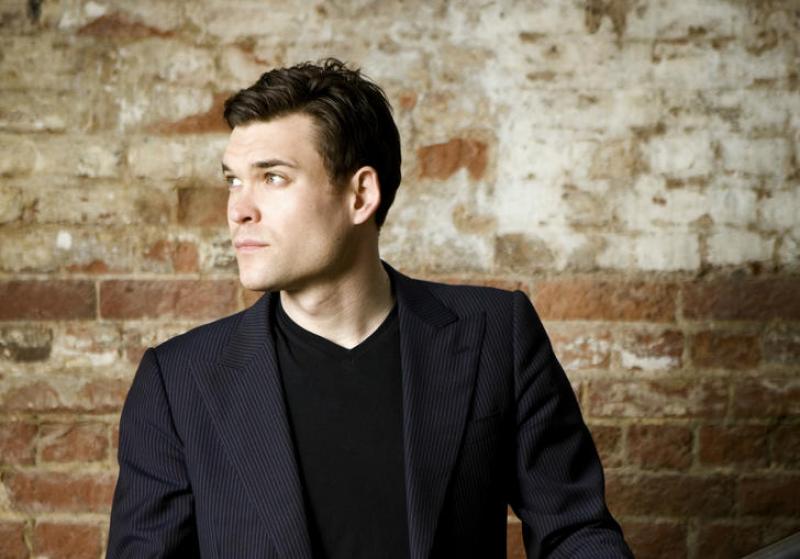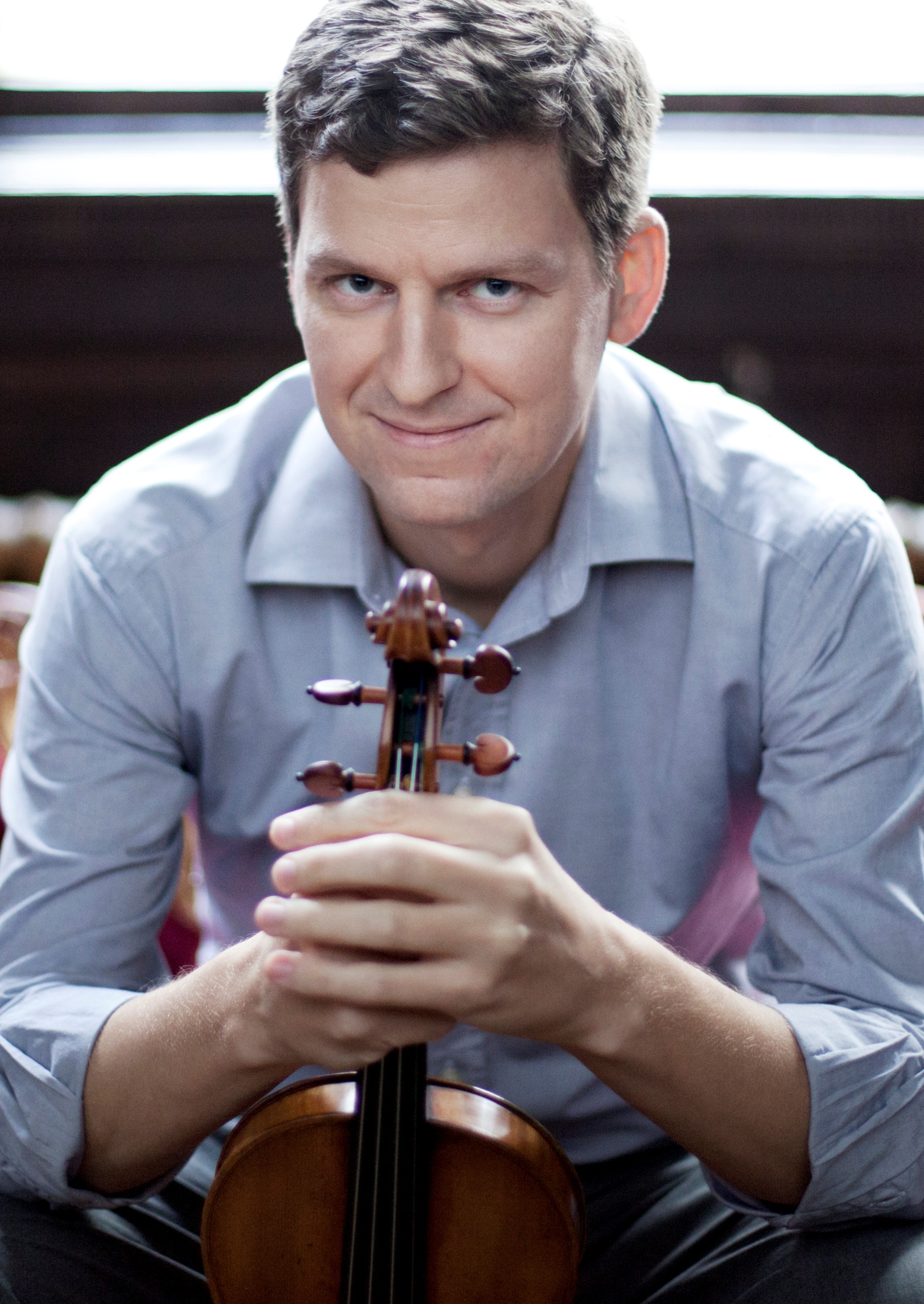Ehnes, BBCSO, Ryan Wigglesworth, Barbican review - a concert of two very different halves | reviews, news & interviews
Ehnes, BBCSO, Ryan Wigglesworth, Barbican review - a concert of two very different halves
Ehnes, BBCSO, Ryan Wigglesworth, Barbican review - a concert of two very different halves
Rarely heard Schoenberg delivers compelling musical drama

The big news on this programme was Schoenberg’s Pelleas and Melisande. This early score, completed in 1903, is a sprawling Expressionist tone poem, making explicit all the passions in Maeterlinck’s play that Debussy only implies.
The piece is a rarity in concert, unsurprisingly given the immense demands it makes on the orchestra, so this performance by the BBC Symphony Orchestra was particularly welcome. Conductor Ryan Wigglesworth stood in at short notice for an indisposed Lothar Koenigs, and one can only marvel at the speed with which he must have digested this huge and unpredictable score. The orchestra sounded alert and precise under his baton, as if every bar had been prepared with the greatest care. Wigglesworth’s operatic experience served him well, his intuitive sense of dramatic pacing bringing buoyancy and life to even the weightiest textures. And the regular changes of pace and mood, the scene changes in the narrative, were all perfectly judged, Wigglesworth carefully timing each brief caesura, then immediately transforming the music.
 Schoenberg relies heavily on the lower end of the woodwind section, and the players all rose to the occasion. The piece opens with a beguiling cor anglais solo, beautifully delivered by Alison Teale. Later we hear complex ensembles of clarinets and horns. The brass and percussion writing is more about power than subtlety, but the players managed both. And a mention, too, for the harpists Louise Martin and Tamara Young, both given regular and prominent solos. This performance was a real event – look out for it in the Radio 3 schedules.
Schoenberg relies heavily on the lower end of the woodwind section, and the players all rose to the occasion. The piece opens with a beguiling cor anglais solo, beautifully delivered by Alison Teale. Later we hear complex ensembles of clarinets and horns. The brass and percussion writing is more about power than subtlety, but the players managed both. And a mention, too, for the harpists Louise Martin and Tamara Young, both given regular and prominent solos. This performance was a real event – look out for it in the Radio 3 schedules.
The Schoenberg clearly took the lion’s share of the rehearsal time, since the orchestra didn’t shine in the same way in the Beethoven Violin Concerto that opened the concert. Wigglesworth and his players went through the motions in the long orchestral introduction, with little sense of direction and only serviceable intonation and ensemble. Fortunately, soloist James Ehnes (pictured above) was able to bring some vigour to the proceedings, significantly raising the temperature of the orchestra from his first entry. Ehnes has a distinctive tone, woody and rich, but also vibrant and nimble when required. He uses vibrato sparingly, often employing a surprisingly straight tone to articulate Beethoven’s thematic discourse. Technically, he is flawless, of course, but this wasn’t a performance of grandstanding virtuosity. There was often an introverted, even haunted, quality to his playing, so the Fritz Kreisler cadenzas were a good choice, tracing the melodies as shadowy silhouettes beneath the filigree finger work above. It was a shame the orchestra couldn’t match Ehnes for the sense of purpose and drive he brought to the Beethoven, but they more than made up for it in the second half.
- This concert was recorded by BBC Radio 3 for future broadcast in Afternoon Concert (weekdays, 2 pm)
- Read more classical music reviews on theartsdesk
rating
Explore topics
Share this article
The future of Arts Journalism
You can stop theartsdesk.com closing!
We urgently need financing to survive. Our fundraising drive has thus far raised £49,000 but we need to reach £100,000 or we will be forced to close. Please contribute here: https://gofund.me/c3f6033d
And if you can forward this information to anyone who might assist, we’d be grateful.

Subscribe to theartsdesk.com
Thank you for continuing to read our work on theartsdesk.com. For unlimited access to every article in its entirety, including our archive of more than 15,000 pieces, we're asking for £5 per month or £40 per year. We feel it's a very good deal, and hope you do too.
To take a subscription now simply click here.
And if you're looking for that extra gift for a friend or family member, why not treat them to a theartsdesk.com gift subscription?
more Classical music
 Kilsby, Parkes, Sinfonia of London, Wilson, Barbican review - string things zing and sing in expert hands
British masterpieces for strings plus other-worldly tenor and horn - and a muscular rarity
Kilsby, Parkes, Sinfonia of London, Wilson, Barbican review - string things zing and sing in expert hands
British masterpieces for strings plus other-worldly tenor and horn - and a muscular rarity
 From Historical to Hip-Hop, Classically Black Music Festival, Kings Place review - a cluster of impressive stars for the future
From quasi-Mozartian elegance to the gritty humour of a kitchen inspection
From Historical to Hip-Hop, Classically Black Music Festival, Kings Place review - a cluster of impressive stars for the future
From quasi-Mozartian elegance to the gritty humour of a kitchen inspection
 Shibe, LSO, Adès, Barbican review - gaudy and glorious new music alongside serene Sibelius
Adès’s passion makes persuasive case for the music he loves, both new and old
Shibe, LSO, Adès, Barbican review - gaudy and glorious new music alongside serene Sibelius
Adès’s passion makes persuasive case for the music he loves, both new and old
 Anja Mittermüller, Richard Fu, Wigmore Hall review - a glorious hall debut
The Austrian mezzo shines - at the age of 22
Anja Mittermüller, Richard Fu, Wigmore Hall review - a glorious hall debut
The Austrian mezzo shines - at the age of 22
 First Person: clarinettist Oliver Pashley on the new horizons of The Hermes Experiment's latest album
Compositions by members of this unusual quartet feature for the first time
First Person: clarinettist Oliver Pashley on the new horizons of The Hermes Experiment's latest album
Compositions by members of this unusual quartet feature for the first time
 Gesualdo Passione, Les Arts Florissants, Amala Dior Company, Barbican review - inspired collaboration excavates the music's humanity
At times it was like watching an anarchic religious procession
Gesualdo Passione, Les Arts Florissants, Amala Dior Company, Barbican review - inspired collaboration excavates the music's humanity
At times it was like watching an anarchic religious procession
 Classical CDs: Camels, concrete and cabaret
An influential American composer's 90th birthday box, plus British piano concertos and a father-and-son duo
Classical CDs: Camels, concrete and cabaret
An influential American composer's 90th birthday box, plus British piano concertos and a father-and-son duo
 Cockerham, Manchester Camerata, Sheen, Martin Harris Centre, Manchester review - re-enacting the dawn of modernism
Two UK premieres added to three miniatures from a seminal event of January 1914
Cockerham, Manchester Camerata, Sheen, Martin Harris Centre, Manchester review - re-enacting the dawn of modernism
Two UK premieres added to three miniatures from a seminal event of January 1914
 Kempf, Brno Philharmonic, Davies, Bridgewater Hall, Manchester review - European tradition meets American jazz
Bouncing Czechs enjoy their Gershwin and Brubeck alongside Janáček and Dvořák
Kempf, Brno Philharmonic, Davies, Bridgewater Hall, Manchester review - European tradition meets American jazz
Bouncing Czechs enjoy their Gershwin and Brubeck alongside Janáček and Dvořák
 Solomon, OAE, Butt, QEH review - daft Biblical whitewashing with great choruses
Even a top soprano and mezzo can’t make this Handel paean wholly convincing
Solomon, OAE, Butt, QEH review - daft Biblical whitewashing with great choruses
Even a top soprano and mezzo can’t make this Handel paean wholly convincing
 Two-Piano Gala, Kings Place review - shining constellations
London Piano Festival curators and illustrious friends entertain and enlighten
Two-Piano Gala, Kings Place review - shining constellations
London Piano Festival curators and illustrious friends entertain and enlighten
 Echo Vocal Ensemble, Latto, Union Chapel review - eclectic choral programme garlanded with dance
Beautiful singing at the heart of an imaginative and stylistically varied concert
Echo Vocal Ensemble, Latto, Union Chapel review - eclectic choral programme garlanded with dance
Beautiful singing at the heart of an imaginative and stylistically varied concert

Add comment